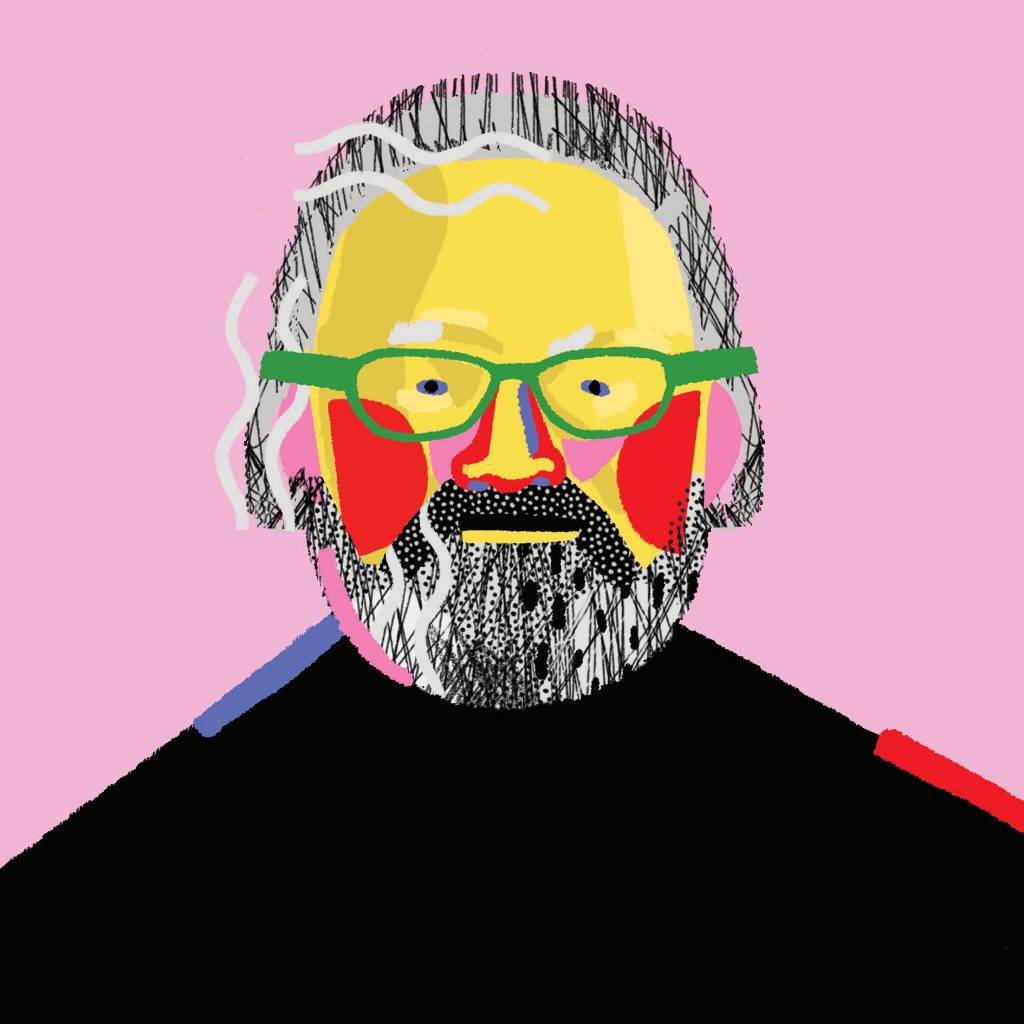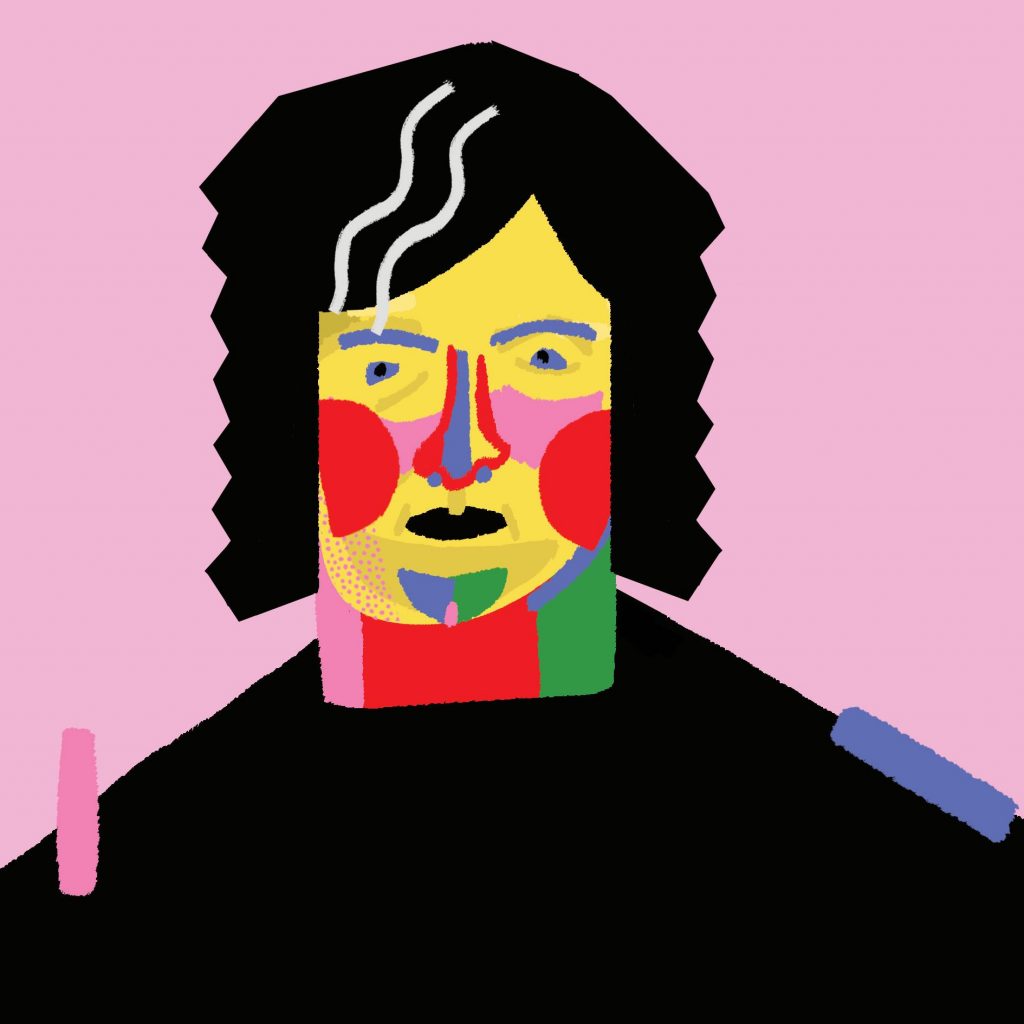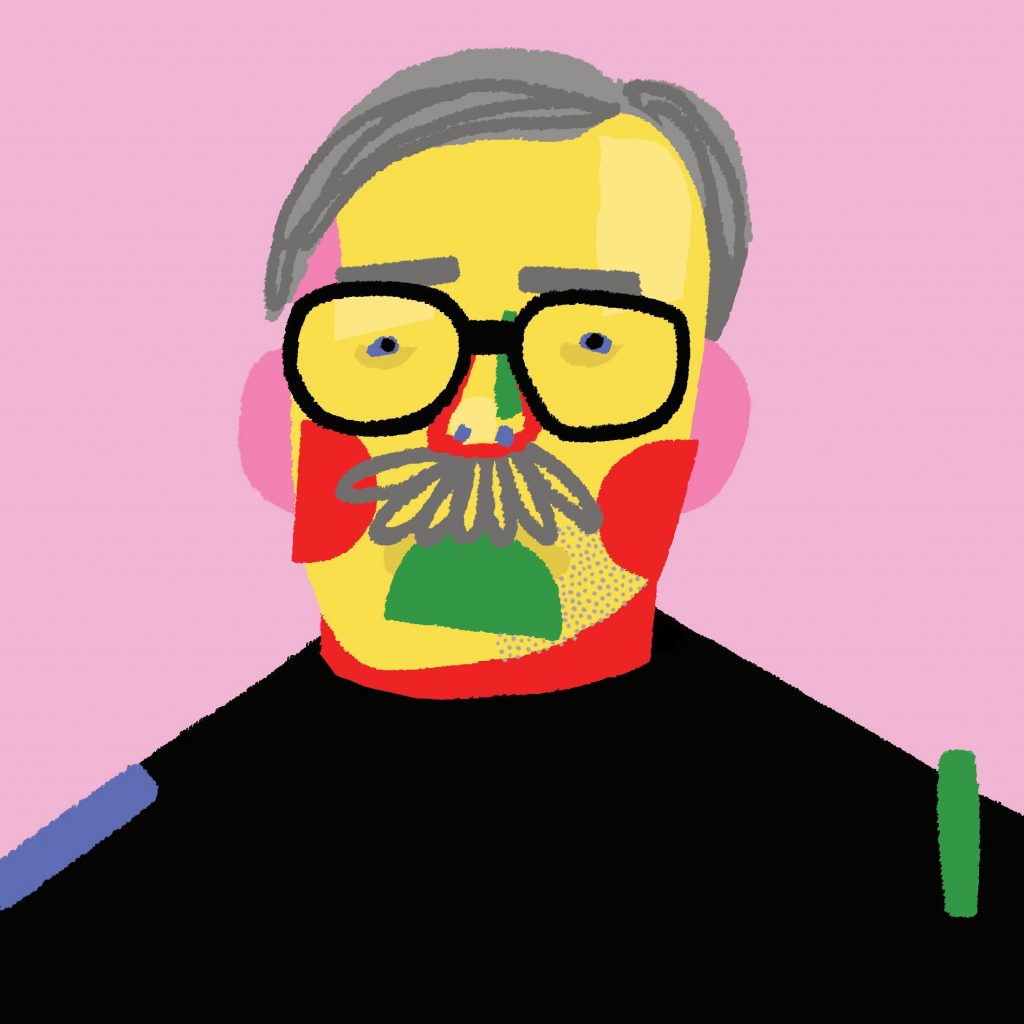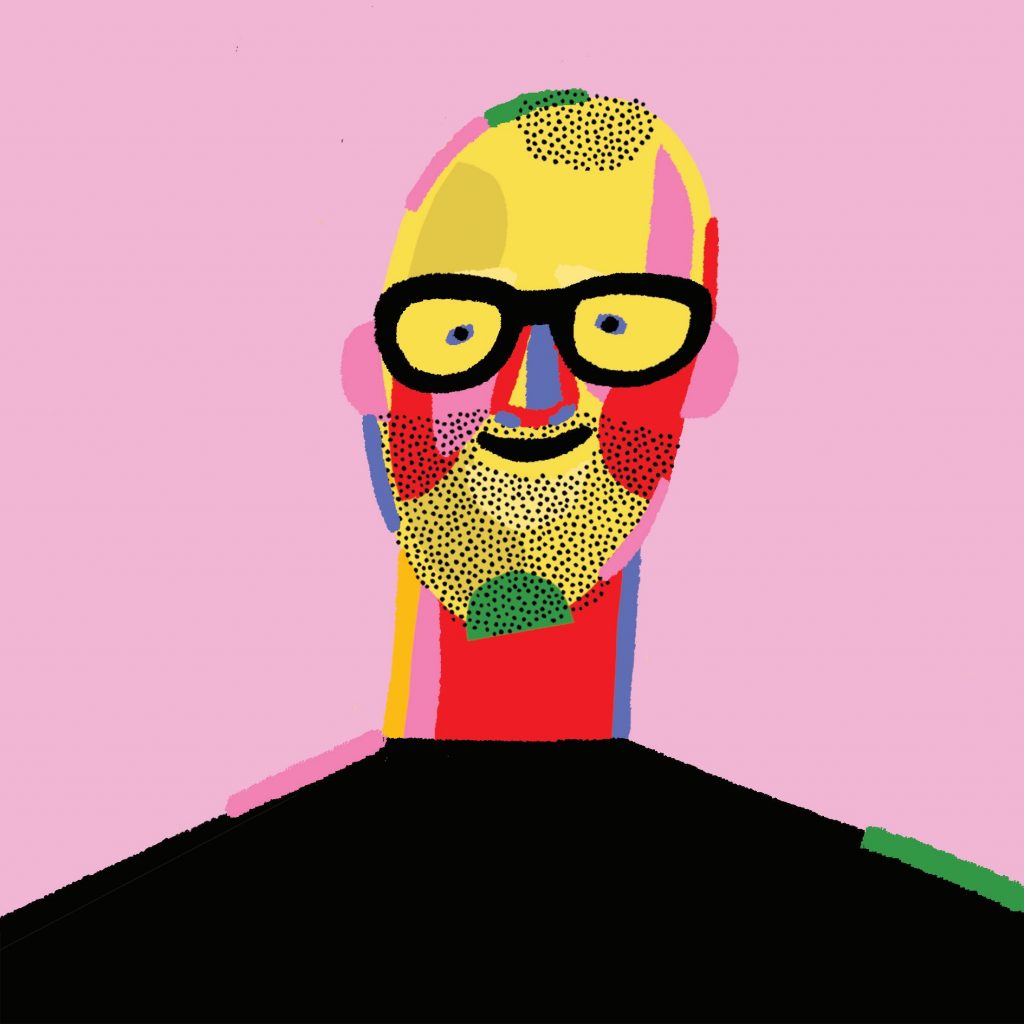
GRZEGORZ ROSIŃSKI 1941
THORGAL 1977 – 2018
series of 36 comics
„God forbid excellence! As long as the artist is dissatisfied with the outcome, (…) they keep on perfecting their skills.“
One of the most popular comic series in Europe was developed in the late 1970s when Grzegorz Rosiński, a renowned comic book artist and artistic director of a comic magazine Relax moved to Belgium. He was there hoping to establish a network in the publishing industry and develop his talents. Soon he met a promising writer Jean Van Hamme. Rosiński invited Van Hamme to cooperate in creating a universal story revolving around fundamental dilemmas faced by people living on both sides of the iron curtain. On the one hand, the story needed to be free of direct political commentaries, and on the other abstract enough for the political censorship in the People’s Republic of Poland to approve it. Thus, an original series was created integrating the Nordic mythology, fantasy, and science fiction as well as such popular genres as western, horror, and adventure novels.
From his childhood years, the artist used his imagination to overcome the bleakness of the surrounding reality. He would create his own imaginary worlds out of broken glass. As he was interested in pictures as a carrier of stories, Rosiński started designing album covers and illustrations. With time he grew particularly fond of comic books, which allow the graphic artist to become “a single-person film crew.” His first comic book to be published was the now legendary Kapitan Żbik. Rosiński’s skills and talents won him such a wide acclaim that he was soon considered as one of the leading artists on the Polish scene of comic books.
Published at the same time in Belgium and communist Poland, the series by Rosiński and Van Hamme was an instant sensation all over Europe. During the first few years Thorgal was created by correspondence, however when the state of emergency was declared in Poland, Rosiński was forced to emigrate. After settling down in Brussels, the artist created many other popular series. He co-created Thorgal up until volume 36 when he decided to pass the series on to a younger generation of artists. Today Rosiński lives in Switzerland where he teaches the art of comic books. He is recognized as one of the biggest authority figures in this artistic field in Europe.
Illustrated by BARBARA FLORES

ZBIGNIEW RYBCZYŃSKI 1949
TANGO 1980
7 minutes 52 seconds
„Art is very similar to science, and artists should do great things; they should be explorers.“
The renowned film by Zbigniew Rybczyński opens with a scene depicting a typical room from the times of the People’s Republic of Poland. Animated characters, who look cut out from newspapers, slowly fill the room. Each person is engaged in their own activity, follows their own trajectory, and doesn’t get into the way of the other characters. Tango has been a source of constant inspiration. The film has been interpreted as a critical portrayal of the Polish society of that time. As the author explains, however, it presents a universal cycle of life – love – death that everyone has to face. Essentially, Rybczyński was fascinated with formal issues. He experimented with making an animated film with the use of analogue methods. His aim was to show many animated characters, each of whom was following their own trajectory. Such an effect was produced by doing complex calculations and constantly rewinding the film in the camera.
The artist was born in Łódź. He was interested in music, however, his artistic and technological flair propelled him to study cinematography and experimental animation, a field where he could fully develop his pioneering ideas of a motion picture. He considers himself an inventor and technologist. In his opinion, art matters only when it solves a particular problem, delivers a technological innovation, or develops a specific vision of the future. Thus, the artist’s obsession with new inventions.
The sophisticated form of Tango brought Rybczyński an Oscar for animated film in 1983. As a result, he was able to move to the USA and create short innovative films by use of the latest technological inventions in the field of film making. He produced a series of music videos for such legendary musicians as Mick Jagger, Yoko Ono, and Pet Shop Boys. Although he hasn’t released any new film since the early 1990s, Rybczyński continues to develop his innovative ideas and technological solutions. His new work is promised to be released the moment the artist feels he has achieved a real breakthrough.
Illustrated by BARBARA FLORES

ANDRZEJ SAPKOWSKI 1948
THE WITCHER 1986 – 2013
literary series
„Before I started writing myself, I was thoroughly familiar with the fantasy canon and its formulas. I could tell the trailblazing from the trite. I knew well how to avoid the traps and mistakes.“
The spectacular success of Geralt’s adventures lies in the story’s complexity and diversity. While writing The Witcher, Andrzej Sapkowski drew inspiration from various European cultures and literary traditions, which he mixed and transformed in unconventional ways. The morally ambiguous world he created was filled with political intrigues and economic problems. The writer didn’t refrain from raising such social issues as xenophobia, religious fanaticism or social class. What he successfully avoided, however, was the stereotypical portrayal of female characters otherwise common in the fantasy genre loaded with eroticism.
His long-term work for the Foreign Trade Office facilitated frequent travels abroad, where he would buy books, mostly fantasy novels then unknown on the Polish market. In 1985 when the Fantastyka monthly magazine called for literary submissions, Sapkowski wrote a trailblazing story for the Polish fantasy literature, The Witcher. The story won such a wide acclaim from the readers that the editorial office asked Sapkowski to submit more. As the world created in the stories gradually developed, the author decided to turn his initial ideas into a multi-volume saga.
Since the fantasy genre is particularly popular among computer gamers, an idea to make The Witcher into a computer game was born. Eventually, a series of three games was produced by the CD Project RED studio over a period of eight years (2007-2015). The third part has become an international bestseller while Geralt has been globally recognized as the most famous character of Polish fiction. Nevertheless, Sapkowski did not feel his work was appreciated enough. This changed when Netflix produced the American series of The Witcher (2019). While promoting the series The Witcher’s literary prototype was strongly emphasized. As a result, Sapkowski has become one of the bestselling and most widely read writers in the world.
Illustrated by BARBARA FLORES

TOMASZ BAGIŃSKI 1976
THE CATHEDRAL 2002
6 minutes 26 seconds
„It takes very long to create animations. It’s not so much about cheerful improvisation but rather about complex calculations that make film elements go perfectly well together.“
It took Tomasz Bagiński three years to create The Cathedral. He worked on every single animation frame on his own. The artist drew much of his inspiration from a story by Jacek Dukaj, Zdzisław Beksiński’s paintings and Antonio Gaudi’s architecture. It’s not common knowledge that the impulse behind the creation of The Cathedral was also an animated film The Staircase by a Polish director Stefan Schabenbeck, which tells a story of a man who climbs a countless number of stairs only to become one of them. Bagiński made the animated film after hours of his regular job. In 2002 The Cathedral received an Oscar nomination in the category of the best animated short film.
Tomasz Bagiński, a talented animator and graphic artist dropped out of college to learn how to create animations using his own personal computer. He remembers drawing comic frames as a child before he even learned how to write. His first short animation titled Rain (1997) is full of, as the artist admits himself, flaws and failures. His subsequent films have gained wide critical acclaim.
After completing The Cathedral, Bagiński started working on Fallen Art and Cinematograph (2009) presenting an alternative history of the beginnings of the cinema based on a comic book by Mateusz Skutnik. Bagiński has also produced a virtual scenography to Krzysztof Penderecki’s The Seven Gates of Jerusalem. The artist created animations to all three parts of The Witcher computer game. On commission of the BBC, he made a spectacular spot promoting the Winter Olympics in Sochi, which has a fantasy feel to it. Bagiński co-created special effects for numerous Polish films. The artist also prepared a highly original and internationally acclaimed series Polish Legends based on local folk tales and legends asa remarkable campaign for a Polish internet platform. Bagiński is the executive producer of the Netflix production of The Witcher series.
Illustrated by BARBARA FLORES
